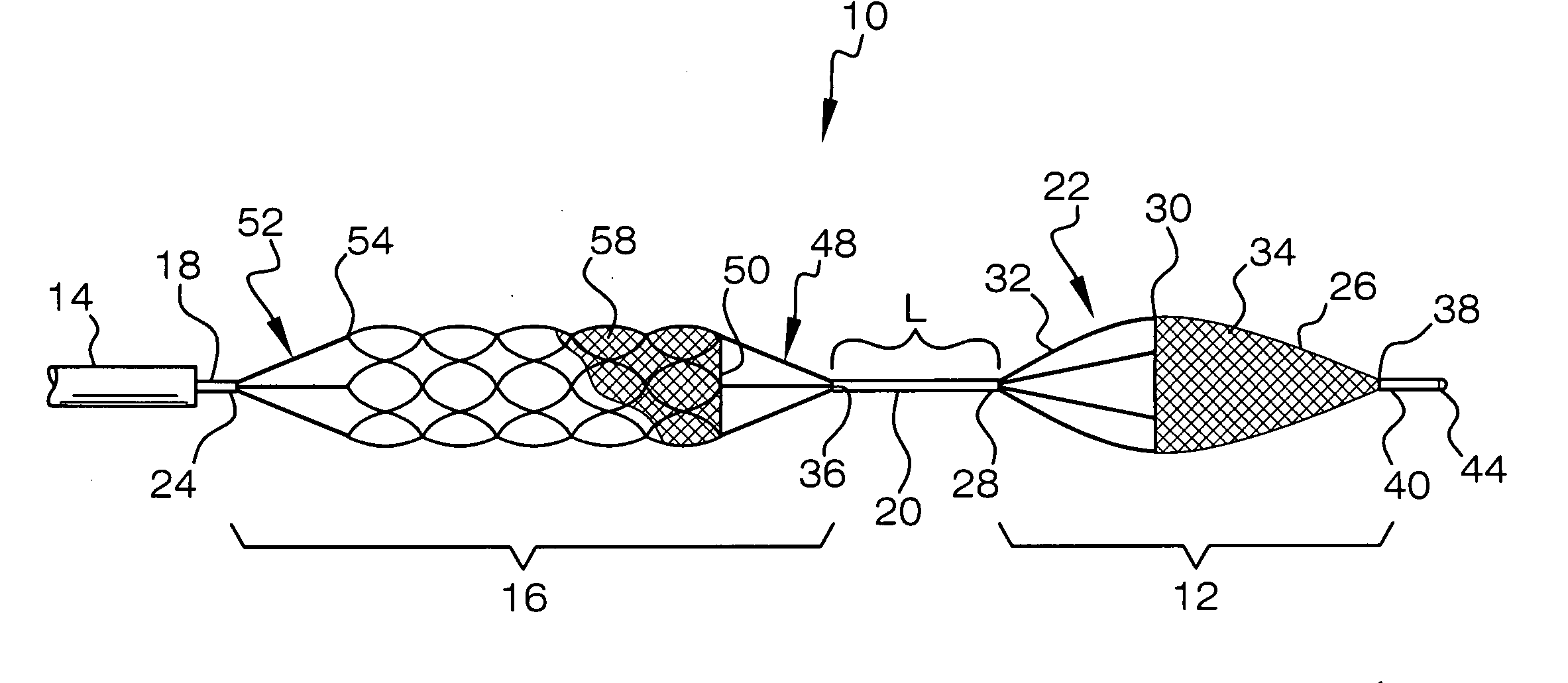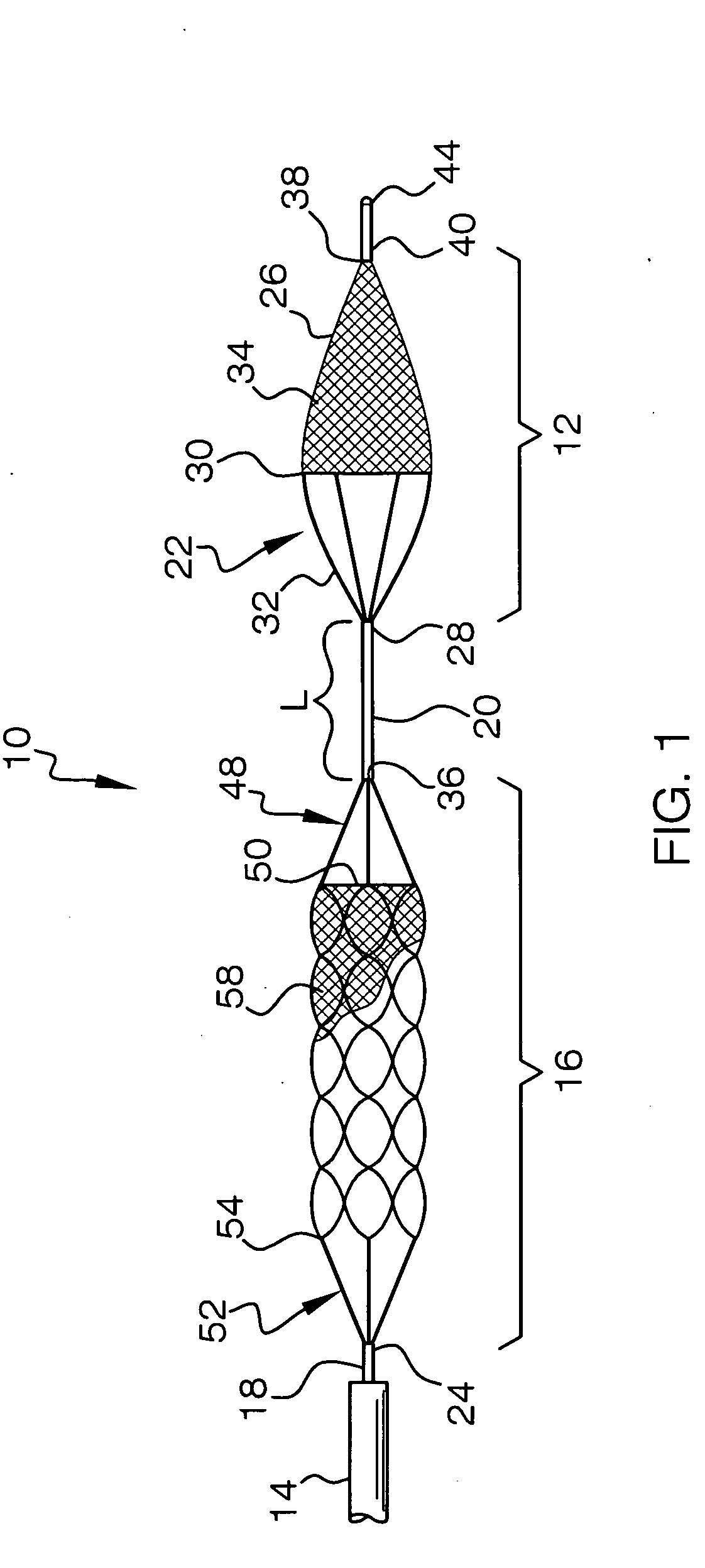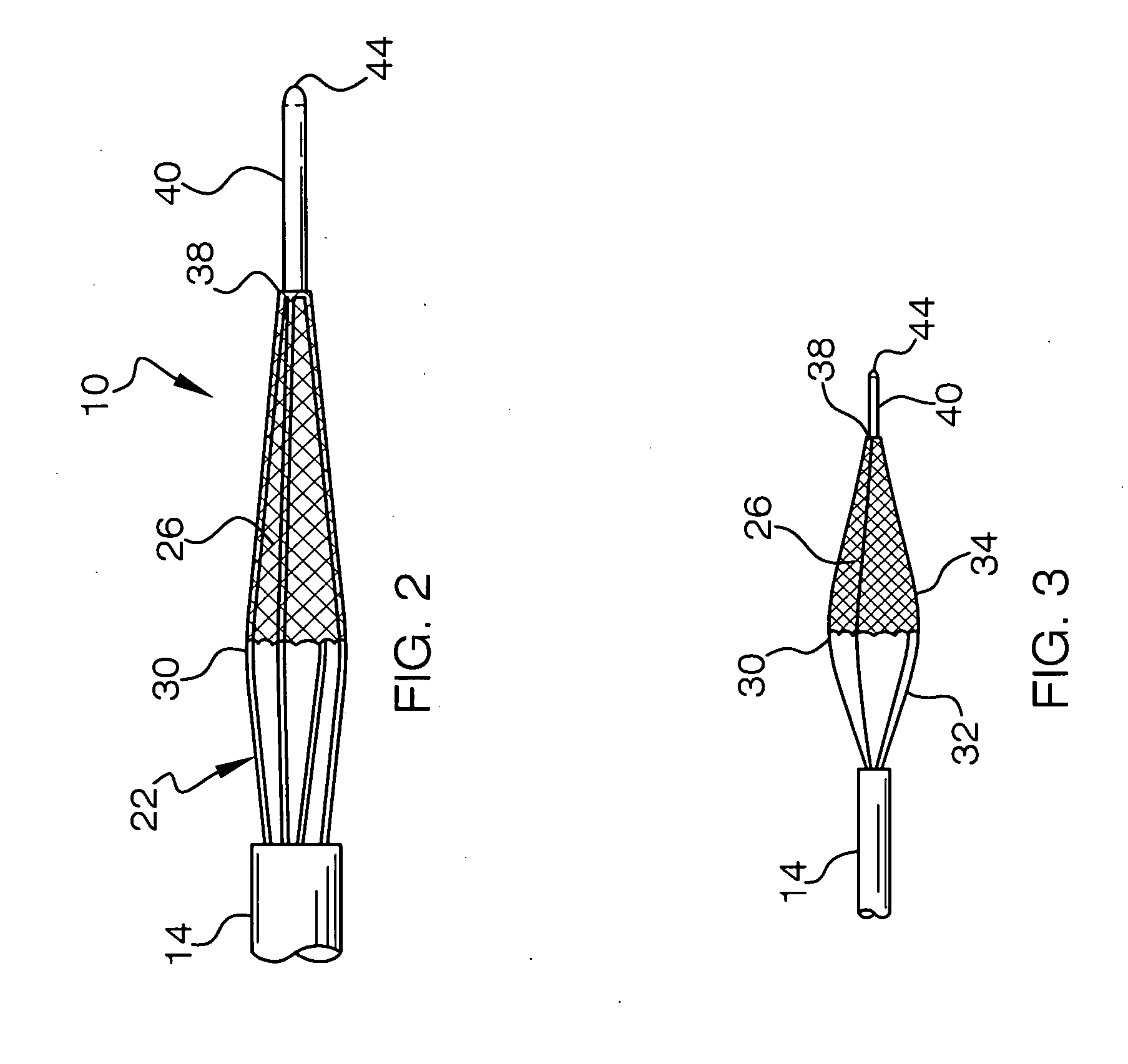Mechanical Embolectomy Device and Method
a technology of embolism and occlusion, applied in the field of mechanical embolism device and method, can solve the problems of limited utility of patients with large clots, limited use of tpa therapy, and significant time constraints of tpa therapy, so as to improve the appreciation of the contribution to the art
- Summary
- Abstract
- Description
- Claims
- Application Information
AI Technical Summary
Benefits of technology
Problems solved by technology
Method used
Image
Examples
Embodiment Construction
[0025]There is shown in FIGS. 1-5 an embolectomy device 10 according to the invention. In FIG. 1, the embolectomy device 10 is shown fully extended. In FIGS. 2-5, the embolectomy device 10 is shown partially extended in various stages. The embolectomy device 10 is positionable in and movable within a catheter 14, such as a microcatheter. The embolectomy device 10 includes an elongated shaft such as proximal wire 18 extending through an opening in the microcatheter 14, an expander portion 16, and a retrieval portion 12. The proximal wire 18 can have a proximal end (not shown) and distal end 24. The expander portion 16 can be provided at the distal end 24 of the proximal wire 18. The retrieval portion 12 can be provided distally at a spaced distance from the expander portion 16, and can be connected to the expander portion by an intermediate elongated shaft or intermediate connecting wire 20.
[0026]The retrieval portion 12 may be formed from or attached to the intermediate connecting w...
PUM
 Login to View More
Login to View More Abstract
Description
Claims
Application Information
 Login to View More
Login to View More - R&D
- Intellectual Property
- Life Sciences
- Materials
- Tech Scout
- Unparalleled Data Quality
- Higher Quality Content
- 60% Fewer Hallucinations
Browse by: Latest US Patents, China's latest patents, Technical Efficacy Thesaurus, Application Domain, Technology Topic, Popular Technical Reports.
© 2025 PatSnap. All rights reserved.Legal|Privacy policy|Modern Slavery Act Transparency Statement|Sitemap|About US| Contact US: help@patsnap.com



